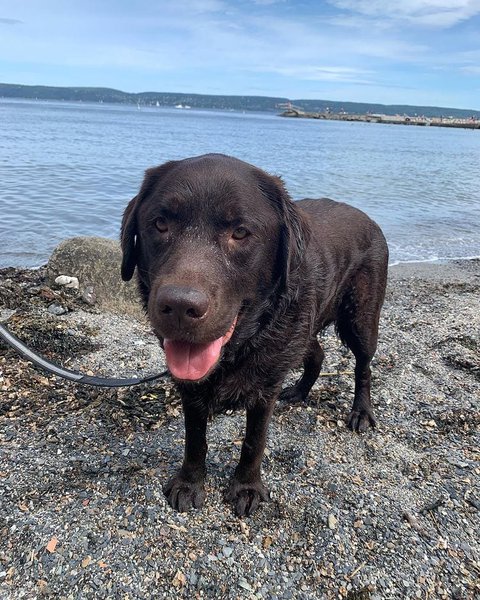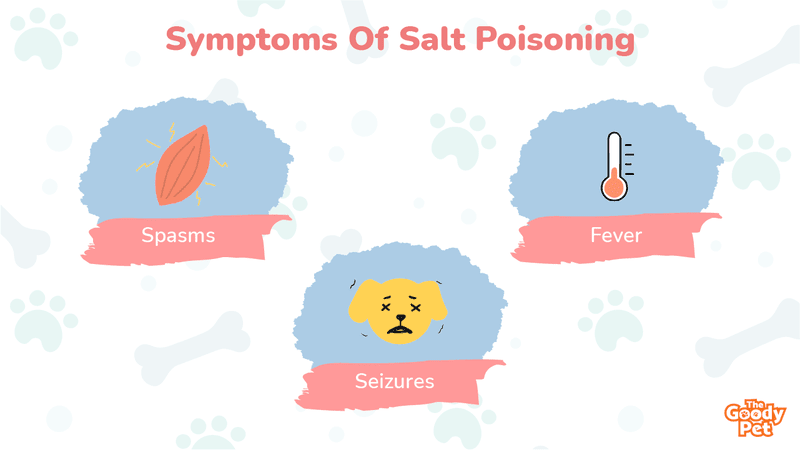Many dog owners never hear about the term ‘salt poisoning’ until they witness the grueling torture their dog passes through as it struggles between life and death due to excess salt ingestion.
So what’s salt poisoning? Salt poisoning occurs when a dog suffers from multiple, life-threatening symptoms after ingesting a substance with a high salt concentration. The substance could be solids like rock salt and paintballs, or liquids like seawater and saline water.
Once your dear Fido starts to vomit or convulse after returning from the beach or after eating a snack, that’s an indication of salt poisoning. If you are a dog owner who feels concerned about salt poisoning and how to protect your beloved canine pal from its devastating hold, fret no more.
Here, we’ve covered everything you need to know about salt toxicity. As you read on, you’ll learn what Salt poisoning is, the causes of salt poisoning, the symptoms of salt poisoning, how to protect your dog from salt poisoning, and lots of other helpful tips.
What Causes Salt Poisoning In Dogs?
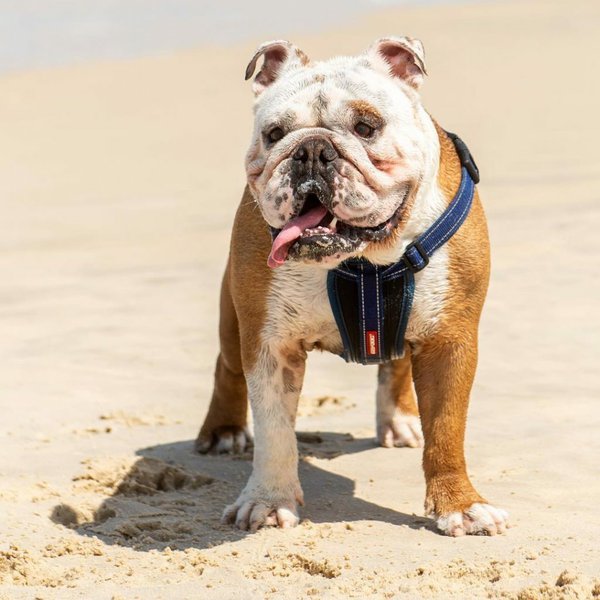
When your furry companion takes in too much salt, the salt attacks its cells and causes them to shrink. Ever wondered why salt is used as a preservative to dry out meat? It’s because salt possesses the ability to draw out the moisture in a meat slab.
The same phenomenon occurs when there’s lots of sodium — another name for salt — in a dog’s body system. Shrinking and constriction take place on a cellular level, ridding the dog’s entire body of beneficial moisture essential to its survival.
What’s worse, a lack of early detection and required treatment could later cause death.
Symptoms Of Salt Poisoning
Several signs abound that indicate the likely occurrence of sodium toxicity in your canine pal, especially if you have a solid reason to suspect that it might have had something containing salt.
Here are some of the major symptoms to look out for.
Excessive Thirst
The dryness in a dog’s throat will instinctively drive it to quench its thirst. Therefore, the fresh water in the dog’s system could help to bring stability to the shrunk cells and balance the salt-to-water ratio.
However, depending on how much salt was ingested and when it was consumed before a dog drinks freshwater, the water could either restore balance or worsen the dog’s health.
Seizures
When brain cells start shrinking from excess sodium, they’ll constrict until they burst. The ruptured brain cells can cause internal bleeding in the skull. They also significantly disrupt the brain’s neurological functions, causing involuntary convulsions and loss of muscle coordination.
Spasms
As cells in the muscles dry out, they lose shape, fluidity and become stiff. Consequently, the stiff muscles start to vibrate from lack of fluidity, which manifests outwardly as spasms in dogs.
Fever
An increase in the body temperature of your dog could mean many things, but sodium toxicity could probably be the reason if it is associated with other listed symptoms.
Other minor symptoms include:
- Headache
- Swollen tongue
- Diarrhea
- Lethargy
- Fever
- Palpitations
What Are The Sources of Salt Poisoning?
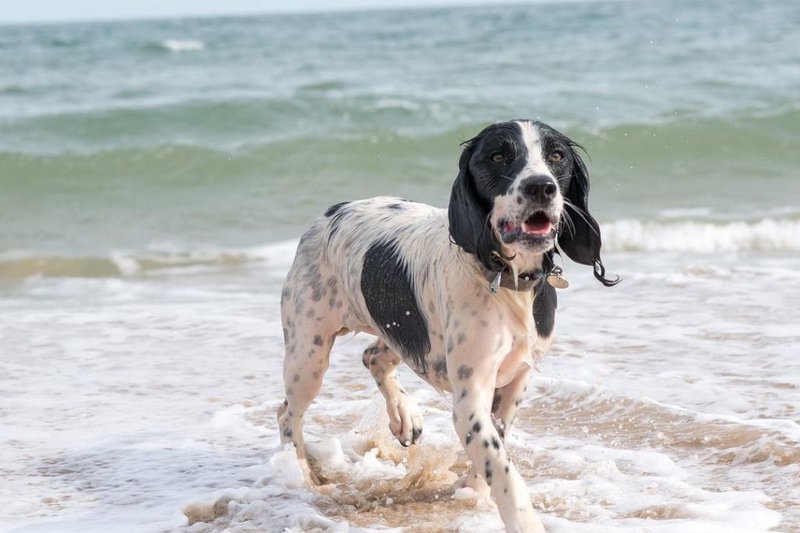
Salt poisoning in dogs could come from two primary sources: At home or the beach.
At Home
There are several ingestible things in the home that could cause salt poisoning to your canine pal. These items are mostly made out of compound sodium.
Some of them are:
- Table salt
- Paintballs
- Rock salt
- Soy sauce
- Cooking butter
At The Beach
The beach is the most unsuspecting place you’ll ever think of, but more often than not, many dogs have died of salt toxicity after a visit to the beach. Always ensure that while you’re out having fun at the seaside, your pooch doesn’t lap seawater out of fun or thirst.
In addition, endeavor to make fresh water available at all times whenever you exert your furry pal physically, so it doesn’t go about drinking anything in sight.
Treatment of Salt Poisoning
Call your veterinary doctor right away if you see symptoms indicating that your pup has ingested too much salt.
It is also important not to give too much water to a dog suffering from salt poisoning, as this could further worsen the brain swelling. Instead, only administer water in small doses until you get to the veterinary clinic.
The vet would administer IV fluids that can help balance out the salt-to-water ratio in your pet’s cells. Also, note that a dog with ruptured cells from a swollen brain would require far more intensive treatment than one faced with a less severe impact of salt toxicity.
How Long Does Salt Poisoning Last in Dogs?
It takes about two to three days to flush out the high sodium concentration from a dog’s body thoroughly.
However, your four-legged companion’s vitality and overall health status before being hospitalized in conjunction with the quality of health care and nutrition it receives after discharge will determine its recovery rate.

How To Take Care Of A Dog Recovering From Salt Poisoning?
A recovering dog will need to abstain from food with any sodium content and at the same time require highly nutritious meals to replenish its lost vitality. Therefore, it would be best if you took care to ensure that your dear fido follows a strictly controlled diet prescribed only by your vet.
Furthermore, try and make your pet available for all subsequent check-ups with the vet, as there will be quite many after the discharge period.
How Do I Protect My Dog from Salt Poisoning?
You can protect your doggie from salt toxicity by remaining vigilant, especially when you’re out together having fun. All dogs are curious and fun-seeking and will ingest things that could be harmful to them.
Nonetheless, the following are things you could do to protect your dog from salt toxicity.
Get Rid Of Potentially Dangerous Objects
Particular objects in the house such as homemade play doughs, paintballs, and ornaments like salt lamps, are composed of sodium compounds that could be detrimental to your pooch’s health if swallowed.
As a dog owner, you’ll need to be extra vigilant in keeping the home clean of any potentially harmful objects.
Avoid Giving Snacks To Your Dog
It’s okay to feel tempted to share the yumminess of some crunchy or tasty delight with your pooch. Every dog owner faces it. But, such an act would sooner land your furry buddy in a clinic because most of these snacks have high sodium content that could damage its health.
Hence, instead of battling the urge to throw those crispy fries at your dog, you could prepare special treats that are even more delicious and healthy.
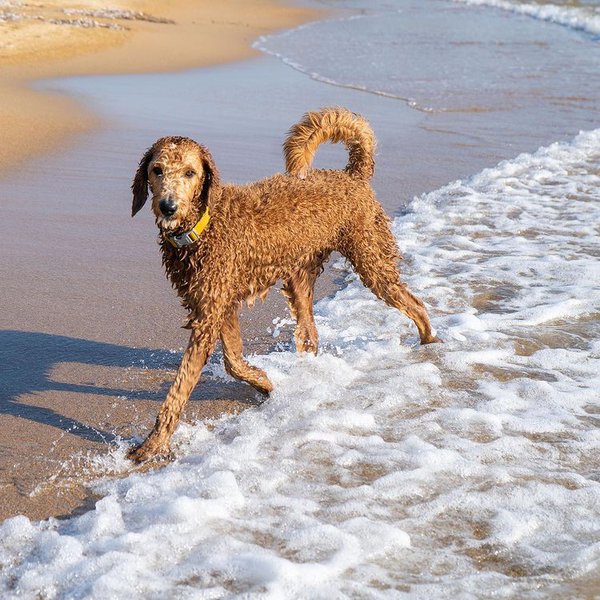
Make Fresh Water Available During Outings
During walks and moments of exercise, your four-legged pal could get thirsty, forcing it to lap water from the nearest available source. You could reduce the chances of your pet lapping strange water by having a bottle handy to quench its cravings when thirst arises.
A general rule of thumb is to ensure your furry buddy gets a good amount of water to drink every thirty minutes.
Keep An Eye On Your Dog At The Beach
However unpleasant it might sound, there’s no better way to put this; you’ll need to remain vigilant with your pooch, especially when at the beach.
And that’s because sometimes, even though your canine pal just drank water minutes ago, it could still lick seawater out of fun. So, keeping watch on your dog would help save its life.
Limit Beach Time To Two Hours Max
The longer you stay at the beach, the longer your pooch is potentially exposed to dangerous saltwater. And that’s because most dogs love the beautiful scenery of crashing waves and sprawling water at the beach, making them more active and playful than usual.
Consequently, this unusual hyperactivity at the beach causes increased thirst among dogs, driving them to lap any water that is within sight. So essentially, reducing beach time serves as a preventive method to keep your pet safe.
What Dog Breeds Are Most Susceptible to Salt Poisoning?
All dog breeds are susceptible to salt poisoning, which could lead to death if not treated in time. Yet, while it’s true that every breed is prone to suffer from salt poisoning, dogs with the natural inclination to play and explore may have an increased bout with salt toxicity.
For instance, bigger dogs, such as the Labrador Retriever and the Standard Poodle, will most likely lap more saltwater than their smaller counterparts at the beach.
This is because they have more energy to leap about and thus will sweat faster, requiring them to drink more water. Hence, in a quest to wet its dry throat, your hefty canine pal may choose to drink dangerous saltwater.
Secondly, due to the associated confidence of having a large body size, large dogs are less afraid of the boisterous waves and will readily wade into the water near the seashore. True to their nature, with mouths agape and hearts racing with excitement, big dogs may inadvertently take in several gulps that could cause trouble for them later.
Ultimately, the telling factor here is whether or not a dog likes to swim and play in the water. Generally, dogs with less affinity for water will seldom go near beach water, precluding the possibility of salt poisoning.
